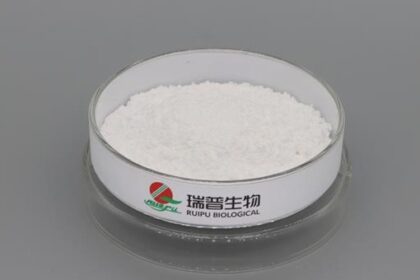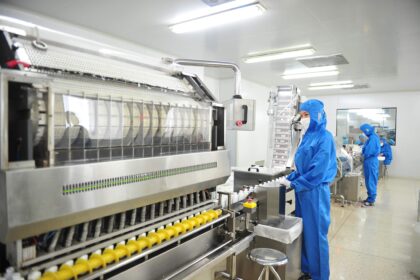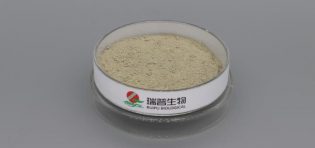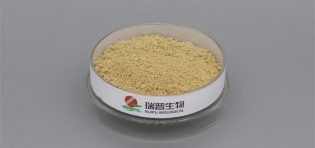
Ferrous Gluconate, a clinically common oral iron supplement, has a core function of replenishing divalent iron ions (Fe²⁺) in the body to correct iron deficiency and maintain iron metabolism balance. Its molecular mechanism centers on the absorption, transport, utilization, and regulation of Fe²⁺, involving multiple key molecular targets and metabolic pathways. The specific analysis can be carried out from the following dimensions:
I. Core Molecular Mechanism: Absorption and Biotransformation of Fe²⁺
After entering the human body, ferrous gluconate first undergoes dissociation and absorption in the gastrointestinal tract, which is the prerequisite for its function. This process relies on the regulation of specific molecular pathways:
Dissociation and release of Fe²⁺ in the gastrointestinal tract: As an organic iron salt, ferrous gluconate dissociates into gluconate ions and Fe²⁺ in the acidic environment of the stomach (pH 1.5-3.5), releasing free Fe²⁺. Compared with inorganic iron salts (such as ferrous sulfate), the dissociation process of ferrous gluconate is gentler and less susceptible to direct interference from food components in the gastrointestinal tract (e.g., phytic acid, tannic acid), laying a foundation for subsequent absorption.
Fe²⁺ absorption pathway in small intestinal epithelial cells: Free Fe²⁺ is mainly absorbed in the upper part of the small intestine (duodenum and proximal jejunum), relying on divalent metal transporter 1 (DMT1) as a key molecular target. DMT1 is a transmembrane protein localized on the brush border membrane of small intestinal epithelial cells, and its activity is regulated by the concentration of Fe²⁺ in the intestine, pH value, and intracellular iron storage status. When the concentration of Fe²⁺ in the intestine increases, DMT1 transports Fe²⁺ from the intestinal lumen into epithelial cells through conformational changes. Meanwhile, vitamin C can maintain the stable state of Fe²⁺ through reduction, further enhancing the transport efficiency of DMT1 for Fe²⁺.
Storage and transport of Fe²⁺ in epithelial cells: A part of the Fe²⁺ entering epithelial cells is stored via ferritin—ferritin is the main intracellular iron storage protein that can bind to Fe²⁺ to form a stable iron-protein complex, preventing oxidative damage to cells caused by free Fe²⁺. The other part is oxidized to trivalent iron ions (Fe³⁺) under the action of ceruloplasmin, and then binds to transferrin receptor 1 (TfR1) on the basolateral membrane of epithelial cells. It then enters the bloodstream through the transferrin (Tf)-mediated transport pathway and is ultimately delivered to tissues and organs throughout the body.
II. Key Functional Targets: Regulating Iron Metabolism and Cellular Functions
The Fe²⁺ released by ferrous gluconate needs to act on specific molecular targets to participate in the body's iron metabolism and maintain physiological functions. The core targets mainly include the following categories:
Transferrin-transferrin receptor system (Tf-TfR): This is the core target system for the transport of Fe³⁺ (oxidized from Fe²⁺) in the blood and its entry into target cells. Fe³⁺ in the blood binds to Tf to form a Fe³⁺-Tf complex. This complex can specifically recognize and bind to TfR1 on the surface of target cells (e.g., erythroid precursor cells, hepatocytes, immune cells) and enter the cells through receptor-mediated endocytosis. In the acidic environment inside the cell, Fe³⁺ dissociates from Tf and is reduced to Fe²⁺, which is then released from the endosome into the cytoplasm via DMT1 for cellular utilization (e.g., hemoglobin synthesis, enzyme production) or storage. This system directly determines the efficiency of Fe²⁺ distribution throughout the body and is a key link in the iron-supplementing effect of ferrous gluconate.
Targets related to hemoglobin synthesis: Fe²⁺ is a core component of hemoglobin, and its molecular mechanism revolves around the biosynthesis of hemoglobin. In erythroid precursor cells (e.g., reticulocytes), Fe²⁺ participates in heme synthesis through the pathway regulated by ALA synthase (ALAS2). ALAS2 is the rate-limiting enzyme for heme synthesis; Fe²⁺ can activate the activity of ALAS2, promote the production of δ-aminolevulinic acid (ALA), and then synthesize heme through multiple steps. Heme then binds to globin chains to finally form hemoglobin. In addition, Fe²⁺ can also affect the stability of globin mRNA by regulating the activity of iron regulatory proteins (IRPs), further ensuring the balance of hemoglobin synthesis. When Fe²⁺ is sufficient in cells, the binding of IRPs to iron-responsive elements (IREs) is inhibited, reducing the degradation of globin mRNA and increasing translation efficiency, ensuring the synchronized synthesis of heme and globin.
Iron metabolism regulatory targets: Iron regulatory protein-iron-responsive element (IRP-IRE) system: This is the core molecular mechanism for the regulation of intracellular iron homeostasis and an important target for ferrous gluconate to regulate iron metabolism. IRPs are a class of cytoplasmic proteins, including IRP1 and IRP2, which can specifically bind to IREs (stem-loop structures) on target mRNAs to regulate gene expression. When the body is iron-deficient, IRPs are activated and bind to IREs: on one hand, this promotes the translation of TfR1 mRNA (increasing iron absorption); on the other hand, it inhibits the translation of ferritin mRNA (reducing iron storage). After ferrous gluconate supplementation, the intracellular Fe²⁺ concentration increases, and Fe²⁺ can bind to IRPs to change their conformation, leading to the dissociation of IRPs from IREs. At this time, TfR1 expression decreases (reducing iron absorption) and ferritin expression increases (increasing iron storage), thereby maintaining intracellular iron homeostasis.
III. Research Hotspots and Potential Development Directions
Current research on the molecular mechanisms and targets of ferrous gluconate is expanding from traditional iron metabolism pathways to broader physiological functions:
Association between Fe²⁺ and oxidative stress regulation: Free Fe²⁺ can generate hydroxyl radicals (・OH) through the Fenton reaction. However, under physiological conditions, the Fe²⁺ released by ferrous gluconate can avoid oxidative damage caused by excessive free Fe²⁺ through the regulation of targets such as ferritin and transferrin. Recent studies have found that an appropriate amount of Fe²⁺ can activate the Nrf2-ARE pathway (nuclear factor E2-related factor 2-antioxidant response element pathway) and promote the expression of antioxidant enzymes such as superoxide dismutase (SOD) and glutathione peroxidase (GSH-Px). This mechanism provides a new direction for the application of ferrous gluconate in the "iron supplementation-antioxidation" synergistic effect.
Target-mediated tissue-specific iron supplementation: Traditional ferrous gluconate lacks tissue specificity in its iron-supplementing effect. In the future, by modifying the ligands of targets such as DMT1 and TfR1, ferrous gluconate delivery systems targeting specific tissues (e.g., bone marrow erythrocytes in anemic states, iron-deficient brain tissues) can be designed. For example, using TfR1 highly expressed on the surface of erythroid precursor cells, Tf-modified ferrous gluconate nanocarriers can be constructed to achieve precise delivery of Fe²⁺ to the bone marrow, improving iron supplementation efficiency and reducing systemic side effects.
Target synergism with other nutrients: It is known that vitamin C can enhance the absorption of ferrous gluconate by reducing Fe³⁺ to Fe²⁺. Recent studies have further found that vitamin B12 can synergistically promote the transport of Fe²⁺ to erythrocytes by regulating the expression of TfR1; folic acid, by affecting the IRP-IRE system, works with Fe²⁺ to maintain the maturation of erythrocytes. These findings provide a molecular target-based basis for analyzing the synergistic mechanism between ferrous gluconate and other nutrients and developing composite precision iron-supplementing preparations.
The molecular mechanism of ferrous gluconate centers on the absorption, transport, and utilization of Fe²⁺, and relies on key targets such as DMT1, TfR1, ferritin, and IRPs to regulate iron metabolism homeostasis. In the future, by in-depth exploration of the tissue specificity of targets and the crosstalk with other pathways, it is expected to further expand its application scenarios in precision nutrition and disease treatment (e.g., iron-deficiency anemia combined with oxidative stress-related diseases).








